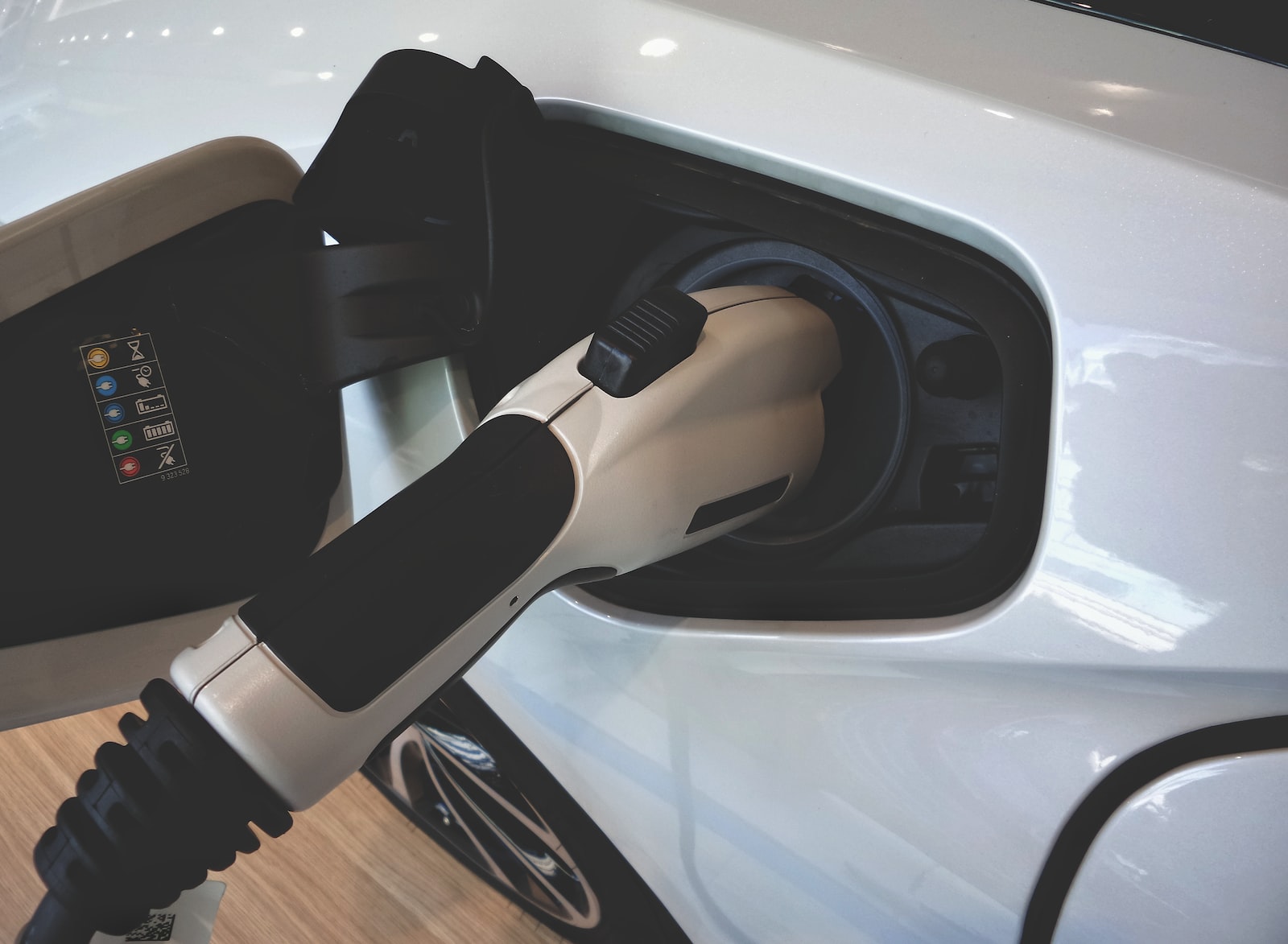A renewable economy could provide a lasting solution to the challenges raised by the evergrowing environmental issues. Climate change, energy security, sustainability, and pollution to name a few. The earth’s atmosphere is a delicate balance of gases that help regulate temperatures on our planet.
But human activity has disrupted this equilibrium by releasing vast amounts of carbon dioxide and other greenhouse gases into the air. These emissions trap heat in the atmosphere, creating a blanket effect that leads to global warming with devastating results. In this, the conversion of our current transport system is one of the most challenging aspects of this transition.
The transport sector currently accounts for around one-quarter of global carbon dioxide emissions, with road transport accounting for 75 percent. If we don’t take action, these trends are projected to continue. Fortunately, there is hope. Bridging the gap between the transportation and energy sectors is essential for achieving universal, efficient, safe, and green mobility.
At present, only 3.3 percent of transport is powered by renewable energy; however, by leveraging synergies between transportation and energy production, businesses can improve their energy efficiency and mitigate climate impacts while simultaneously decreasing their carbon footprint.
Fossil fuels have been depleting and receiving negative attention due to their emissions, leading governments and consumers alike to seek alternative automotive powertrains like electric vehicles and low-carbon fuels. Lithium-ion batteries are the latest breakthrough in battery technology and will be utilized in electric and hybrid cars of the future.
According to the latest report by Market.us, In 2022, the Global Lithium Ion Battery Market was valued at $59.8 billion and it is expected to reach $307.8 billion in 2032. Between 2023 and 2032, this market is estimated to register the highest CAGR of 18.3 percent.
With such rapid growth, lithium-ion batteries are rapidly becoming the go-to source for powering electric and hybrid cars in the future. This technology offers numerous advantages, such as longer-lasting batteries, faster charging times, and greater energy density. Furthermore, unlike traditional fossil fuels, lithium-ion batteries are much more environmentally friendly; producing significantly fewer emissions.
Sources of green energy transportation
Today, there are various forms of green energy transportation available, each offering its own advantages.
Electric vehicles
Electric vehicles (EVs) are becoming more and more common, running solely on electricity stored in a battery. Not only do these emit no tailpipe emissions but they’re an excellent option for reducing our carbon footprint. With advances in battery technology, EVs can now travel farther on a single charge with shorter charging times – making them more practical for everyday use.
Governments around the world are taking initiatives to promote electric vehicles (EVs). Germany for instance is offering attractive incentives to purchase EVs, including grants and tax reductions for fully electric passenger cars, small to medium-sized electric trucks, and heavy-duty trucks. This initiative has resulted in an unprecedented shift towards clean transportation within their country.
In the US, the federal government is offering incentives to encourage the adoption of electric vehicles (PEVs), including tax credits of up to $7,500 for qualified PEVs. This incentive aims at decreasing costs associated with EVs, making them more accessible to consumers, and encouraging their widespread adoption.
Hybrid vehicles
Hybrid vehicles have come a long way since their introduction into the market in the late 1990s. Nowadays, you can find various hybrid models from different manufacturers, ranging from compact cars to SUVs. Not only do hybrids improve fuel efficiency and reduce emissions, but they also offer improved acceleration and overall performance.
Hybrid technology is constantly progressing, with new models featuring more advanced systems such as plug-in hybrids that let drivers charge their batteries from external power sources. Plug-in hybrids can operate entirely on electric power for short trips, cutting emissions and increasing fuel efficiency even further.
Hybrid vehicles are set to become even more popular as consumers look for greener transportation solutions. According to a report by the International Energy Agency, hybrids will make up over 30% of global car sales by 2030. With their improved performance, fuel efficiency, and reduced emissions, it’s clear that hybrids play an integral role in transitioning toward a sustainable future.
Bicycles
Cycling isn’t just environmentally friendly; it also provides numerous health advantages to its riders. Bicycling is an excellent form of exercise that strengthens muscles and keeps you at a healthy weight. Thanks to e-bikes becoming more commonplace, people of all fitness levels can now take advantage of cycling without needing special equipment or facilities.
E-bikes feature a battery-operated motor to assist riders in pedaling, and they can reach speeds of up to 20 miles per hour. Plus, many cities are investing in bicycle infrastructure like dedicated lanes and bike-sharing programs, making it safer and easier for people to use bikes as transportation.
Multiple occupant vehicles
Carpooling is an efficient way to promote green energy transportation and reduce our carbon footprint. For instance, when five people share a ride instead of driving separately, the number of vehicles on the road is reduced by four – this can have an enormous effect on traffic congestion and emissions. Carpooling not only saves us money on gas, but it also cuts down on vehicle wear and tear, leading to lower maintenance costs.
Furthermore, it facilitates new connections and strengthens social networks as we share a ride with others who share similar destinations. With the advent of apps and services designed specifically for this purpose, finding a carpool partner has never been simpler – contributing towards an eco-friendly future at the same time.
In fact, many companies now offer carpooling programs to their employees to help reduce their carbon footprint and promote a sense of community within the workplace.
One successful example of a carpooling program is the “Commuter Connections” program in the Washington, D.C. metro area. This program offers a ride-matching service to commuters, allowing them to connect with others who have similar commutes and travel schedules. The program also provides incentives to encourage carpooling, such as free parking for carpools, and helps businesses set up their own carpooling programs.
Benefits of green energy transportation
Green energy transportation is becoming more and more popular due to its numerous advantages over traditional modes of transport. Here are some of the key advantages associated with green energy transportation:
Reduction in carbon emissions
Green energy transportation, such as electric vehicles (EVs) and hybrids, produces significantly fewer greenhouse gas emissions compared to traditional gasoline-powered vehicles. This reduction helps combat climate change while improving air quality – making green energy transportation an environmentally sustainable and eco-friendly choice.
Lessening operating costs
Electric vehicles (EVs and hybrids) tend to have lower operating costs compared to their gasoline-powered counterparts due to fewer moving parts, fewer maintenance requirements, and fewer oil changes. Furthermore, electricity or charging costs tend to be significantly lower than gasoline costs, leading to substantial savings over time.
Health benefits
Green energy transportation has numerous health advantages. It reduces air pollution, leading to fewer respiratory problems, cardiovascular diseases, and other ailments. Furthermore, as more people adopt green energy transportation methods, demand for fossil fuels will decrease – leading to fewer oil spills and other environmental disasters.
Energy independence
Green energy transportation can contribute to energy independence. By using renewable sources like solar, wind, and hydroelectric power for charging electric vehicles (EVs), countries can reduce their reliance on foreign oil which may experience price changes or supply chain disruptions.
Increased economic growth and job creation
Transitioning to green energy transportation can stimulate economic growth and create new jobs. As demand for green energy vehicles grows, infrastructure like charging stations and renewable energy plants will need to be constructed. Furthermore, the production of EVs and other green energy vehicles will create job openings in the manufacturing, engineering, and research and development departments.
Transforming the transportation system
A transition towards sustainable transportation systems offers numerous advantages to society as a whole. Green energy transportation presents businesses with an array of business prospects to stay competitive in today’s rapidly evolving market.
Renewable energy is revolutionizing the United States and making great strides toward meeting its energy demands. According to data from the US Energy Information Administration, in 2021 renewables produced an impressive 12.16 quadrillion British thermal units (Btu) of energy, accounting for 12 percent of total countrywide energy consumption.
The electric power sector has been the driving force behind this growth, accounting for 59 percent of total U.S. renewable energy consumption in 2021. This can be attributed to utilities’ increasing adoption of renewable technologies like wind, solar, and hydropower across America. As these alternatives become more cost-effective and accessible, they are becoming a reliable and sustainable source of energy production.
Renewable energy is making a major impact on the U.S. electricity generation market. By 2021, about 20 percent of total U.S. electrical production would come from sustainable sources – that means a fifth of our nation’s electricity comes from clean sources that power homes, businesses, and industries alike.
Examples of successful green energy transportation companies
Already, several successful green energy transportation companies have emerged on the market. Companies such as Tesla, BYD, and Proterra have all made impressive advancements in electric vehicle development and production. Furthermore, ChargePoint and EVBox have become leaders in the provision of charging stations for electric vehicles. With the advent of intelligent transportation systems things appear to be changing rapidly.
Leading ride-hailing companies are taking action to reduce their carbon footprint, making a major contribution to global efforts towards combatting climate change. Cabify, the popular urban mobility app in Europe and Latin America, set an example by becoming the first and only ride-hailing company to achieve carbon neutrality. By offsetting 100% of its emissions from both corporate operations and every ride booked through its app, Cabify offsets 100 percent of its CO2 emissions. Furthermore, Cabify plans on electrifying its transportation fleet in Spain and Latin America; further cutting back on emissions.
Uber, a major player in the ride-hailing industry, has made an ambitious goal to become fully zero-emission by 2040. To accomplish this goal, they plan to ensure that 100 percent of their rides take place using zero-emission vehicles, public transit, or micro-mobility options such as bikes and scooters – an ambitious target but one necessary to address global environmental problems.
A more sustainable future
In conclusion, the rise of green energy transportation is an encouraging step in our transition toward a more sustainable future. Companies and governments around the world taking proactive measures to reduce their carbon footprint and invest in renewable sources. These initiatives reduce emissions while safeguarding our planet for future generations.
Transitioning to green energy transportation is a long and complex process, requiring substantial investments in infrastructure, research, and development. Individuals must also make conscious choices regarding their transportation habits – either by taking public transportation, biking, or carpooling. With continued effort and investment, we can make significant progress toward saving the planet one ride at a time.
TechNode Global INSIDER publishes contributions relevant to entrepreneurship and innovation. You may submit your own original or published contributions subject to editorial discretion.
AI and machine learning for social good: Inspiring initiatives in Asia and beyond



